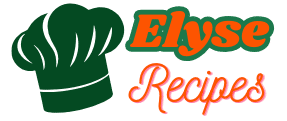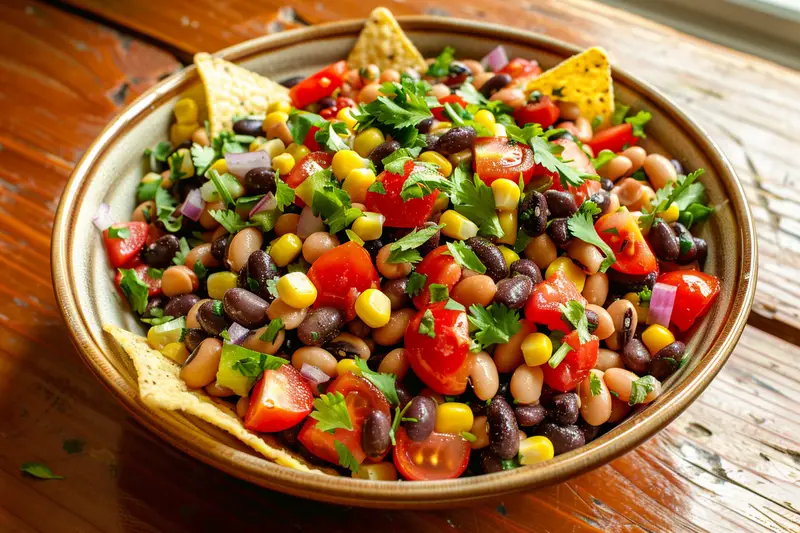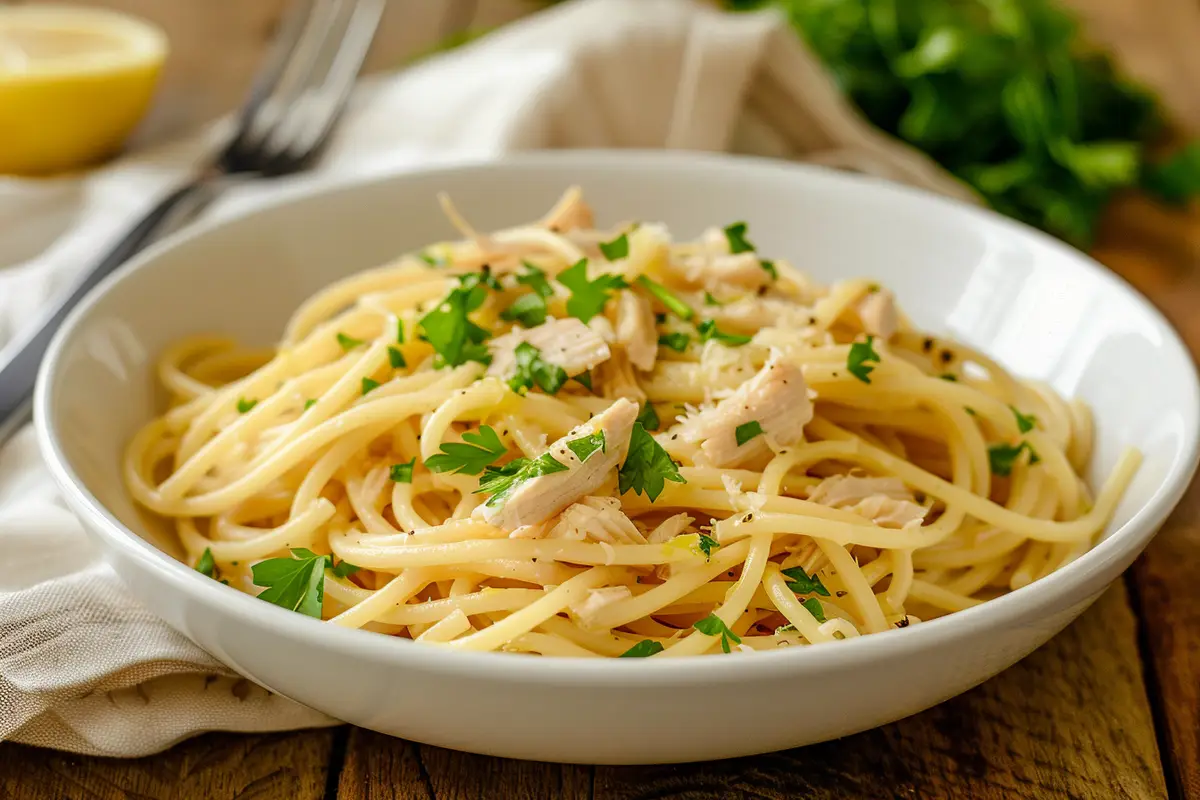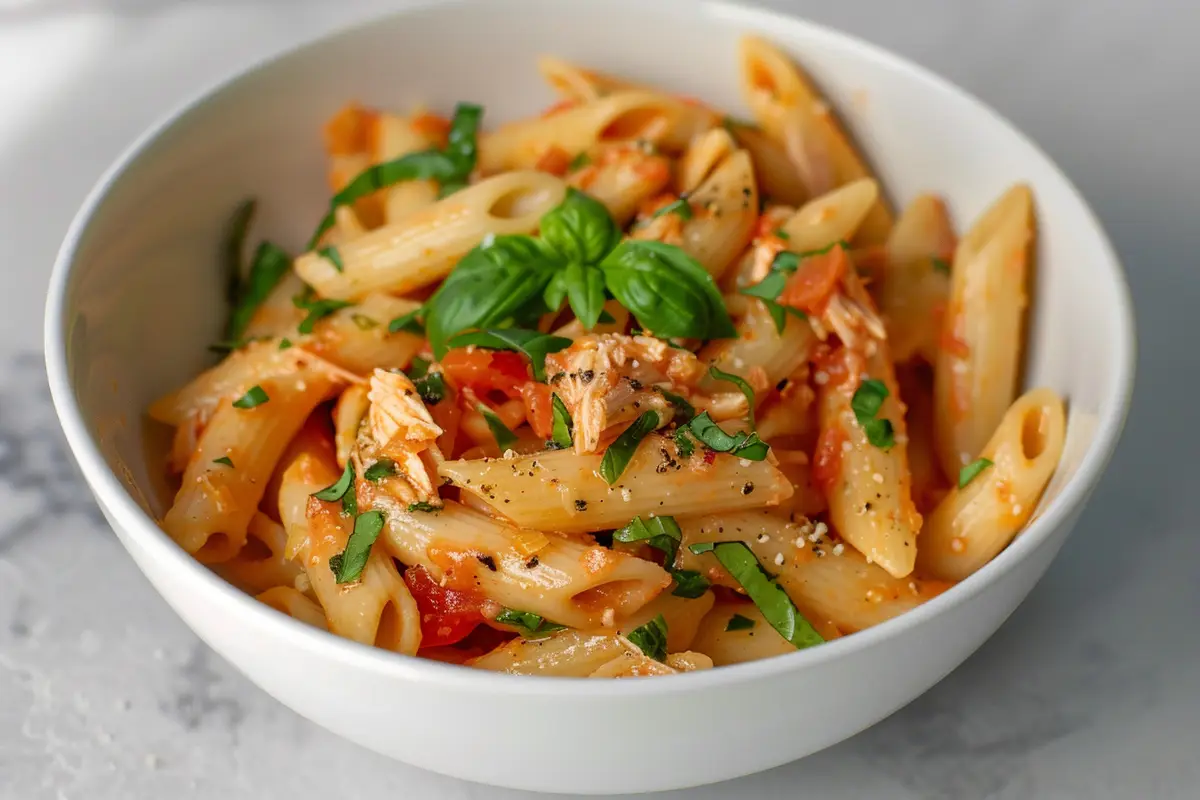Salmon is one of the most nutritious and flavorful fish, making it a favorite among seafood lovers. Baking salmon is one of the easiest and healthiest ways to cook it while ensuring it remains moist, tender, and flaky. In this guide, we’ll cover everything you need to know to make the perfect baked salmon, from selecting the best fish to seasoning and cooking it to perfection.
For an extra nutritional boost, try adding ginger to your baked salmon; it’s known for its anti-inflammatory and antioxidant properties, which can enhance overall health; learn more here: https://www.healthline.com/nutrition/11-proven-benefits-of-ginger.

Perfect Baked Salmon
- Total Time: 22-25 minutes
- Yield: 1 large salmon fillet (1.5 lbs) 1x
Description
This perfect baked salmon recipe is incredibly easy, healthy, and flavorful. Baked to perfection with a simple lemon-garlic seasoning, this dish remains moist, tender, and flaky every time. Whether you’re following a keto, paleo, or Mediterranean diet, this baked salmon is packed with omega-3s, protein, and essential vitamins. Pair it with roasted vegetables or a fresh salad for a delicious and nutritious meal!
Ingredients
Must-Have Ingredients:
- 1.5 lbs salmon fillet (wild-caught preferred)
- 1 tbsp olive oil (or melted butter)
- 2 cloves garlic (minced)
- ½ tsp salt
- ¼ tsp black pepper
- 1 lemon, sliced
- 1 tbsp fresh parsley (chopped, for garnish)
Optional Flavor Enhancers:
- 1 tsp Dijon mustard (for a tangy flavor)
- 1 tbsp honey or maple syrup (for a touch of sweetness)
- ½ tsp paprika or cayenne (for a hint of heat)
- 1 tsp fresh dill or thyme (for added depth)
Instructions
- Preheat the Oven to 400°F (200°C). Line a baking sheet with parchment paper or aluminum foil.
- Prepare the Salmon: Pat the salmon dry with a paper towel and place it skin-side down on the baking sheet.
- Season: Drizzle with olive oil or melted butter. Sprinkle garlic, salt, black pepper, and optional seasonings. Lay lemon slices on top.
- Bake: Cook for 12-15 minutes or until the salmon easily flakes with a fork. (Internal temp: 125-130°F for medium-rare, 135-140°F for medium).
- Rest & Serve: Let the salmon rest for 5 minutes, then garnish with fresh parsley and an extra squeeze of lemon.
Notes
- Storage: Keep in an airtight container in the refrigerator for up to 3 days or freeze for up to 3 months.
- Reheating: Warm in a 275°F oven for 10-15 minutes or gently on the stovetop.
- Serving Suggestions: Pair with roasted asparagus, garlic mashed potatoes, quinoa salad, or lemon butter rice.
- Variations: Try a honey-mustard glaze, Cajun seasoning, or teriyaki marinade for different flavor profiles.
- Prep Time: 10 minutes
- Cook Time: 12-15 minutes
- Cuisine: American, Mediterranean
Nutrition
- Serving Size: 4 servings
- Calories: ~ 280 kcal
- Fat: ~18g
- Carbohydrates: ~1g
- Protein: ~30g
By the end of this article, you’ll know:
- Why baking is the best way to cook salmon
- How to choose the freshest, highest-quality salmon
- The essential ingredients and seasonings for the best flavor
Let’s dive into the details!
Table of Contents
Why Baked Salmon is the Best Cooking Method
Health Benefits of Baked Salmon
Baked salmon is not only delicious but also incredibly healthy. Here’s why:
✅ Rich in Omega-3 Fatty Acids – Supports heart health, reduces inflammation, and improves brain function.
✅ High in Protein – Essential for muscle growth, repair, and overall body function.
✅ Packed with Vitamins and Minerals – A great source of vitamin D, B12, selenium, and potassium.
✅ Low in Calories and Carbs – Perfect for keto, paleo, and Mediterranean diets.
Why Baking is Better Than Other Cooking Methods
| Cooking Method | Pros | Cons |
|---|---|---|
| Baking | Retains moisture, easy to cook, and requires minimal oil. | Longer cooking time compared to pan-searing. |
| Grilling | Adds a smoky flavor, great for summer. | Can dry out the fish if overcooked. |
| Pan-Searing | Creates a crispy crust. | Requires more oil and close monitoring. |
| Poaching | Keeps the salmon moist. | Lacks a crispy texture and bold flavor. |
Baking ensures even cooking, prevents dryness, and requires less oil, making it one of the healthiest and easiest ways to cook salmon.
Choosing the Best Salmon for Baking
Before you start cooking, choosing the right salmon is key to getting the best flavor and texture.
Wild-Caught vs. Farm-Raised Salmon: Which is Better?
| Feature | Wild-Caught Salmon | Farm-Raised Salmon |
|---|---|---|
| Flavor | Rich, robust flavor | Milder taste |
| Texture | Firmer and less fatty | Softer and higher fat content |
| Nutrition | Higher in omega-3s and lower in contaminants | Contains more fat and possible additives |
| Price | More expensive | More affordable |
Wild-caught salmon is generally considered the best choice due to its higher omega-3 content and natural diet, but farm-raised salmon is also a good option if you’re on a budget.
Fresh vs. Frozen Salmon: What’s the Difference?
- Fresh salmon is best if consumed within 1-2 days of purchase. Look for:
- A bright, pink-orange color
- Firm flesh that bounces back when pressed
- Minimal fishy smell (fresh salmon should smell like the ocean)
- Frozen salmon is a great alternative. If properly frozen, it retains nutrients and flavor. When buying frozen salmon:
- Choose vacuum-sealed fillets to prevent freezer burn.
- Thaw overnight in the refrigerator before cooking.
Skin-On vs. Skinless Salmon: Which Should You Use?
✅ Skin-On Salmon – Helps retain moisture, prevents sticking, and adds extra flavor.
✅ Skinless Salmon – Easier to eat but may dry out faster when baked.
For the best results, bake salmon with the skin on, then remove it before serving if desired.
Essential Ingredients for Baked Salmon
A great baked salmon recipe starts with simple, high-quality ingredients. Here’s what you’ll need:
Must-Have Ingredients
- Salmon fillet – Choose fresh, wild-caught salmon for the best flavor.
- Olive oil or melted butter – Helps keep the fish moist and enhances flavor.
- Garlic (minced or powder) – Adds a delicious, savory depth.
- Salt & Pepper – Essential for seasoning the salmon properly.
- Lemon slices – Adds brightness and balances the richness of the fish.
Optional Flavor Enhancers
Want to customize your salmon? Try these additional ingredients:
| Ingredient | Flavor Profile |
|---|---|
| Dijon Mustard | Adds tang and sharpness. |
| Honey or Maple Syrup | Creates a touch of sweetness. |
| Paprika or Cayenne | Adds a bit of heat. |
| Fresh Herbs (Dill, Parsley, Thyme) | Brings freshness and depth. |
Best Seasoning Blends for Baked Salmon
Try these seasoning combinations for different flavor profiles:
✔ Classic Lemon-Garlic – Garlic, salt, pepper, olive oil, and lemon slices.
✔ Honey Dijon Glaze – Honey, Dijon mustard, garlic, and a splash of lemon juice.
✔ Spicy Cajun – Cajun seasoning, paprika, cayenne pepper, and garlic powder.
✔ Asian-Inspired – Soy sauce, ginger, garlic, sesame oil, and a drizzle of honey.
With the right salmon and seasonings, you’re ready to start baking!
Step-by-Step Guide to Making Baked Salmon
Baking salmon is incredibly simple, but a few key steps will help you achieve perfectly flaky, moist, and flavorful results every time.
Step 1: Preparing the Salmon
- Preheat the oven to 400°F (200°C) – This temperature ensures a balance between browning and moisture retention.
- Line a baking sheet with parchment paper or aluminum foil – Makes cleanup easier and prevents sticking.
- Pat the salmon dry with a paper towel – Helps the seasoning stick better.
- Place the salmon skin-side down on the baking sheet – This prevents overcooking and makes it easier to remove the skin later if desired.
Step 2: Seasoning the Salmon
- Drizzle with olive oil or melted butter – Locks in moisture and enhances flavor.
- Sprinkle with salt, black pepper, and minced garlic – The basics for a flavorful fillet.
- Add lemon slices on top – Infuses a fresh, citrusy aroma while baking.

Optional Additions:
- For a sweet glaze: Brush with honey or maple syrup.
- For a tangy kick: Spread a thin layer of Dijon mustard.
- For spice lovers: Sprinkle cayenne pepper or paprika.
Step 3: Baking Time and Temperature
The thickness of your salmon fillet determines the cooking time:
| Oven Temperature | Cooking Time (Per Inch of Thickness) |
|---|---|
| 375°F (190°C) | 15-18 minutes |
| 400°F (200°C) | 12-15 minutes |
| 425°F (220°C) | 10-12 minutes |
Step 4: Checking for Doneness
- Internal Temperature: Use a meat thermometer – it should read 125-130°F for medium-rare or 135-140°F for medium.
- Fork Test: The salmon should flake easily when gently pressed with a fork.
- Color Check: The center should be slightly translucent but not raw.
Step 5: Resting and Serving
- Let the salmon rest for 5 minutes after removing it from the oven.
- Garnish with fresh herbs (dill or parsley) and an extra squeeze of lemon juice.
Now that your salmon is perfectly baked, let’s explore some delicious sauces to enhance the flavor!
Best Sauces for Baked Salmon
A great sauce can elevate your baked salmon and add exciting flavors. Here are some of the best options:
1. Garlic Butter Sauce (Classic & Rich)
✅ Ingredients:
- 3 tbsp butter (melted)
- 2 cloves garlic (minced)
- 1 tbsp lemon juice
- 1 tsp fresh parsley (chopped)
🔹 How to Make It:
- Melt the butter in a small pan.
- Add minced garlic and sauté for 30 seconds.
- Stir in lemon juice and parsley, then drizzle over baked salmon.
2. Honey Mustard Glaze (Sweet & Tangy)
✅ Ingredients:
- 2 tbsp Dijon mustard
- 1 tbsp honey
- 1 tsp lemon juice
- ½ tsp garlic powder
🔹 How to Make It:
- Mix all ingredients in a small bowl.
- Brush over salmon before baking for a caramelized glaze or after baking for extra flavor.
3. Creamy Dill Sauce (Light & Refreshing)
✅ Ingredients:
- ½ cup Greek yogurt or sour cream
- 1 tbsp fresh dill (chopped)
- 1 tbsp lemon juice
- 1 tsp garlic powder
- Salt & pepper to taste
🔹 How to Make It:
- Combine all ingredients in a bowl.
- Chill for 10 minutes before serving with baked salmon.
4. Teriyaki Glaze (Asian-Inspired)
✅ Ingredients:
- ¼ cup soy sauce
- 1 tbsp honey or brown sugar
- 1 tsp ginger (grated)
- 1 tsp sesame oil
🔹 How to Make It:
- Heat all ingredients in a saucepan over low heat until thickened.
- Brush over salmon before or after baking.
With the perfect sauce ready, it’s time to pick the best side dishes to serve with your baked salmon!
What to Serve with Baked Salmon
Pairing your baked salmon with the right sides can turn it into a complete, restaurant-quality meal.
1. Best Vegetable Side Dishes
- Garlic Roasted Asparagus – Toss with olive oil, salt, and garlic, then roast at 400°F for 15 minutes.
- Steamed Broccoli – A healthy, fiber-rich side that pairs well with salmon.
- Lemon Butter Green Beans – Sautéed with butter, garlic, and a squeeze of lemon.
- Honey Glazed Carrots – Sweet and tender, perfect for balancing the salmon’s richness.
2. Best Carbohydrate Side Dishes
- Lemon Butter Rice – Fluffy rice infused with fresh lemon juice and butter.
- Garlic Mashed Potatoes – Creamy, buttery, and a classic pairing with salmon.
- Quinoa Salad – A light and healthy grain option with fresh veggies and herbs.
3. Wine Pairing Suggestions
Pairing the right wine with baked salmon enhances the dining experience:
| Type of Salmon | Best Wine Pairing |
|---|---|
| Classic Lemon-Garlic Salmon | Chardonnay (buttery & rich) |
| Spicy Cajun Salmon | Riesling (slightly sweet, balances spice) |
| Honey Mustard Salmon | Sauvignon Blanc (crisp & citrusy) |
| Teriyaki Salmon | Pinot Noir (light-bodied & fruity) |
With these sides and wine pairings, your baked salmon meal is guaranteed to impress!
Baked Salmon Variations
Want to switch things up? Try these delicious variations of baked salmon!
1. Parchment Paper (En Papillote) Salmon
Baking salmon in parchment paper locks in moisture and infuses it with amazing flavors.
🥄 How to Make It:
- Preheat oven to 400°F (200°C).
- Place salmon on a large piece of parchment paper.
- Add vegetables (cherry tomatoes, zucchini, bell peppers) and seasonings.
- Fold the paper over the salmon and seal the edges tightly.
- Bake for 15-20 minutes until the paper puffs up.
✔️ Flavor Boost: Add a splash of white wine or lemon juice inside the parchment for extra aroma!
2. Spicy Cajun Baked Salmon
If you love bold flavors, this spicy Cajun salmon is perfect!
🥄 How to Make It:
- Preheat oven to 425°F (220°C).
- Rub salmon with olive oil, paprika, cayenne, garlic powder, and thyme.
- Bake for 10-12 minutes, then broil for 2 minutes for a crispy finish.
✔️ Pair With: Corn on the cob, rice, or grilled vegetables.
3. Asian-Style Teriyaki Baked Salmon
A sweet and savory option inspired by Japanese flavors.
🥄 How to Make It:
- Make a marinade with soy sauce, honey, ginger, and sesame oil.
- Marinate salmon for 15-30 minutes in the fridge.
- Bake at 400°F for 12-15 minutes, basting with extra sauce.
✔️ Best Served With: Steamed jasmine rice and sautéed bok choy.
PART 8: How to Store, Reheat, and Meal Prep Baked Salmon
How to Store Baked Salmon
Proper storage ensures your salmon stays fresh and delicious for later.
| Storage Method | How Long It Lasts | Best Practice |
|---|---|---|
| Refrigerator | Up to 3 days | Store in an airtight container. |
| Freezer | Up to 3 months | Wrap tightly in foil, then place in a freezer-safe bag. |
✔️ Tip: Store salmon without sauce to maintain texture when reheating.
How to Reheat Baked Salmon Without Drying It Out
Oven (Best Method)
- Preheat to 275°F (135°C).
- Wrap salmon in foil with a splash of water or broth.
- Bake for 10-15 minutes until warmed through.
Stovetop (Quick Method)
- Heat a pan over low heat.
- Add a bit of butter or olive oil.
- Warm salmon for 2-3 minutes per side.
Microwave (Not Recommended)
- Use low power (50%) and heat in 30-second bursts.
- Cover with a damp paper towel to retain moisture.
✔️ Best Tip: Avoid overheating—salmon should be warm, not overcooked.
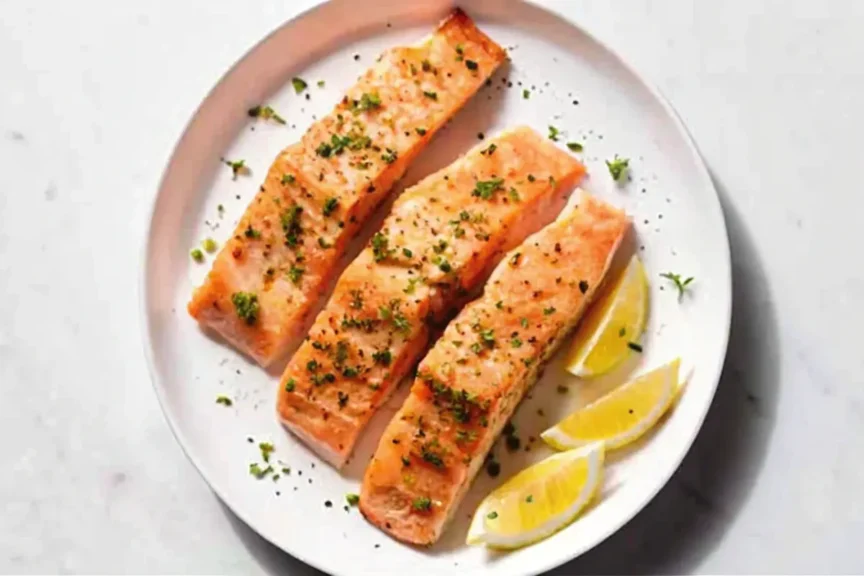
Meal Prep Tips for Baked Salmon
Baked salmon is great for meal prep!
✅ Cook multiple fillets at once and store them in meal-prep containers.
✅ Use salmon for salads, wraps, rice bowls, or pasta throughout the week.
✅ Keep sauces separate to maintain texture and freshness.
FAQs About Baked Salmon
Here are some expert answers to common questions about baking salmon:
PAA1: How do I prevent baked salmon from drying out?
- Bake at 400°F for 12-15 minutes (avoid overcooking).
- Use olive oil or butter to lock in moisture.
- Let salmon rest for 5 minutes after baking.
PAA2: Can I bake frozen salmon without thawing it first?
Yes! Just increase the baking time by 5-10 minutes.
PAA3: What’s the best way to reheat baked salmon?
The oven at 275°F is the best method—it keeps the salmon moist and flaky.
PAA4: How long can I store baked salmon?
- Refrigerator: Up to 3 days.
- Freezer: Up to 3 months (wrap it tightly).
PAA5: Can I use skin-on salmon for baking?
Yes! The skin helps retain moisture and adds extra flavor.
PAA6: Is baked salmon keto-friendly?
Absolutely! Salmon is low-carb and high in healthy fats, making it perfect for keto.
Conclusion & Final Tips
Baking salmon is one of the easiest, healthiest, and most delicious ways to prepare this flavorful fish. Whether you keep it classic with lemon and garlic, spice things up with Cajun seasoning, or go for a teriyaki glaze, you now have all the tools to make perfect baked salmon every time!
Final Expert Tips for the Best Baked Salmon
✅ Choose high-quality salmon (wild-caught is best).
✅ Season generously and experiment with different flavors.
✅ Bake at the right temperature to keep it moist.
✅ Don’t overcook! Salmon should be flaky, not dry.
✅ Try different serving ideas—salads, rice bowls, pasta, or tacos!
Now, it’s time to head to the kitchen and enjoy a perfect baked salmon meal!
For more delicious meal ideas, check out the best side dishes for salmon, perfect casseroles to pair with salmon fillets, and meat pairings that complement salmon to create a well-rounded, flavorful meal!
